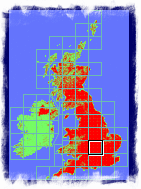Owing to the Flash Earth layer thingy published a few days ago, you might notice things a little choppy around here at the moment… my own little corner of the web is not normally this busy. Currently have about 3-4 times the normal traffic levels, which is about 200 visitors at any one time. Just the layer has been downloaded by about 1,200 people and generated about 70,000 hits. So far beating the Cloud and sky layer from a while ago by about x2.
Fortunately I been working on scaling rather a lot lately (on Geograph and a bit at work), so might have to put some things into practice ‘ere.

 Yesterday
Yesterday 
